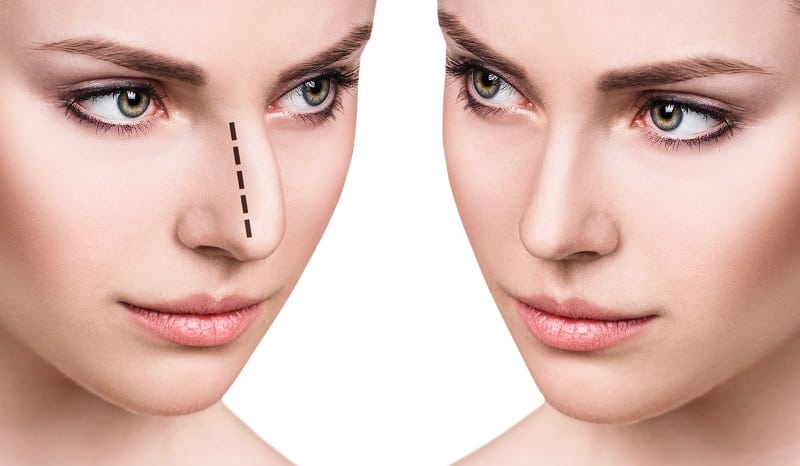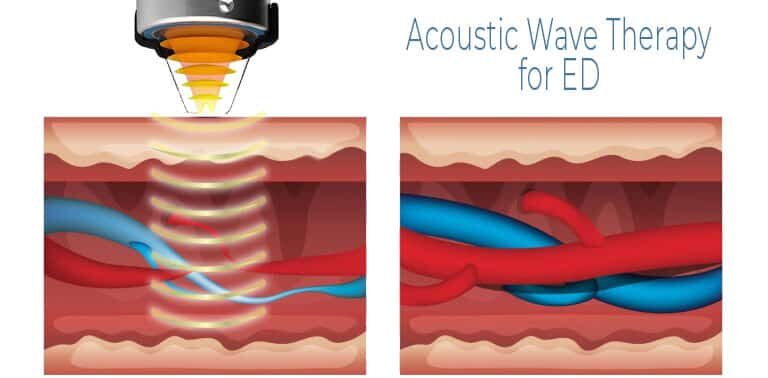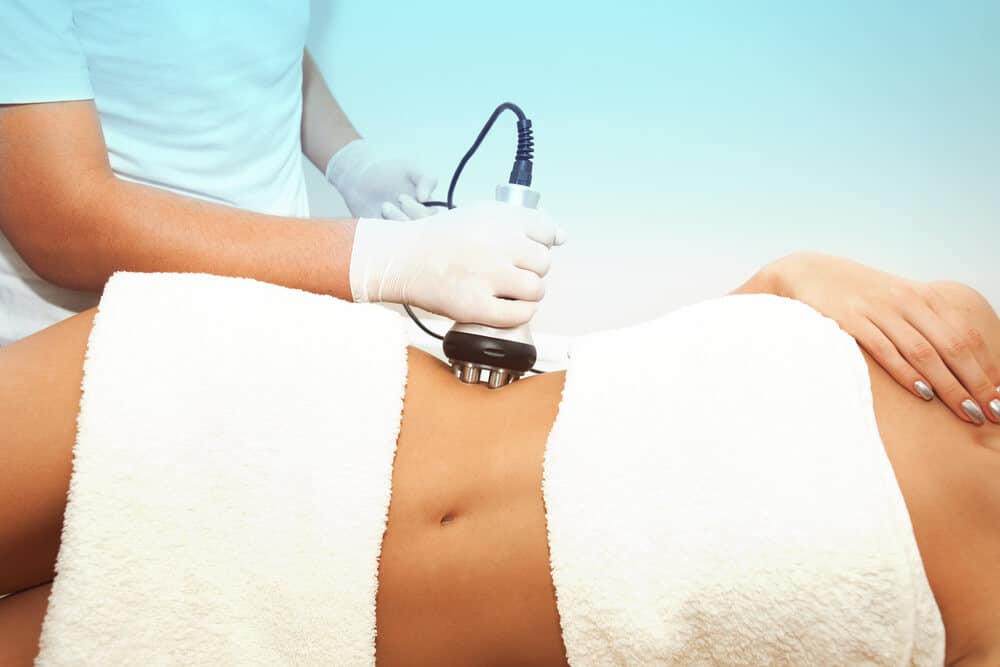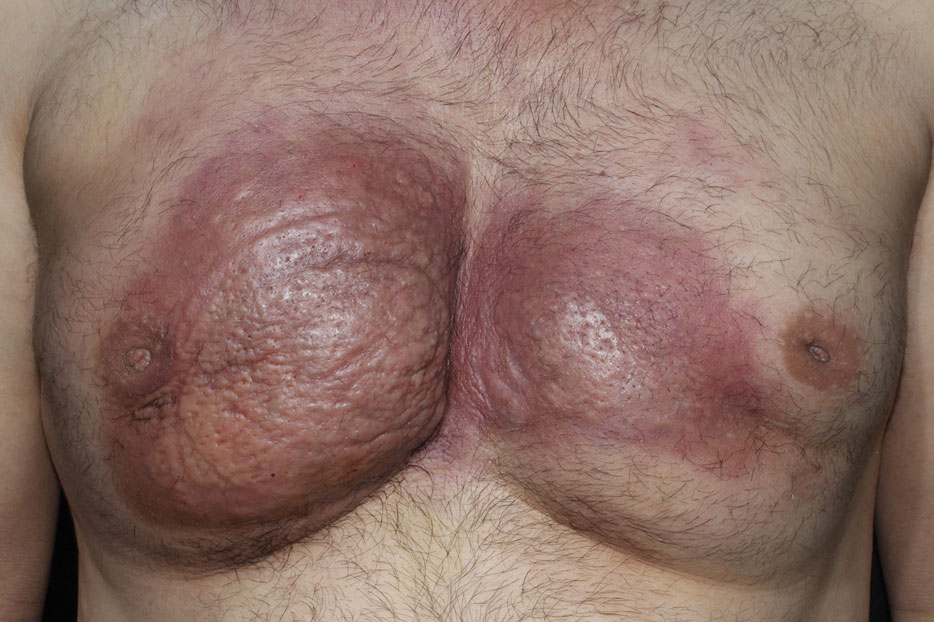A non-surgical nose job offers a quick and effective way to enhance your appearance without the commitment of surgery, unlike traditional rhinoplasty procedures, while providing rhinoplasty results that many nasal procedures achieve for rhinoplasty patients. Many people assume that achieving a perfect nose through surgical rhinoplasty fillers requires extensive procedures and high costs, including rhinoplasty surgery and surgical revision rhinoplasty for noses. However, the non-surgical option, like a nose filler for a contoured nose, presents a more affordable alternative with less downtime than a minute nose job for a flat nose.
The non-surgical noses job cost can vary widely based on factors like location and provider expertise. While some may think it’s out of reach for a contoured nose, many find it surprisingly budget-friendly for their noses. This treatment not only boosts confidence but also provides immediate results. Understanding the costs involved helps you make an informed decision about your options.
Understanding Non-Surgical Nose Jobs
Definition
Non-surgical nose jobs are cosmetic procedures that utilize injectable fillers. These fillers reshape the nose without making any incisions. The most common types of fillers used include hyaluronic acid and calcium hydroxylapatite. These materials help to alter the nose shape and enhance the overall nasal profile.
Non-Invasive Nature
These procedures are non-invasive, meaning they do not require surgery. Unlike traditional surgical nose jobs, there is no general anesthesia needed. Patients can often return to their daily activities immediately after treatment. This makes it an appealing option for those who want a quick change without the downtime associated with surgical options.
Common Goals
People seek non-surgical nose jobs for various reasons. Many aim to smooth out bumps on their noses. Others may want to lift the nasal tip or add volume to specific areas. Some patients desire a more contoured nose or a refined nasal anatomy. These goals can be achieved through targeted injections of nose fillers.
Procedure Details
During the procedure, a qualified practitioner injects filler into specific areas of the nose. This can create a straighter appearance or improve the nose profile. The results are typically immediate, allowing patients to see changes right away. However, full effects may take a few days to settle as swelling decreases.
Risks and Considerations
While non-surgical options are generally safe, some risks exist. Swelling, bruising, or asymmetry may occur after treatment. In rare cases, complications like infection or vascular occlusion can happen. It’s essential for patients to consult with experienced professionals before proceeding.
Duration of Results
Results from non-surgical nose jobs usually last between six months to two years. Factors influencing this include the type of filler used and individual metabolism rates. Patients may need follow-up treatments to maintain their desired nose structure.
Cost Factors
The cost of non-surgical nose jobs varies widely based on several factors. Geographic location plays a significant role in pricing. The experience level of the injector and the type of filler used can affect costs too. On average, prices range from $600 to $1,500 per session.
Comparison with Surgical Options
Surgical nose jobs offer permanent results but involve longer recovery times and higher costs. Revision nose jobs may also be necessary for some patients who are unhappy with previous outcomes. Non-surgical options provide flexibility for those seeking temporary enhancements without major commitments.
How Much Does a Non-Surgical Nose Job Cost
Typical Cost Range
The typical cost for a non-surgical nose job ranges from $600 to $1,500. This price can vary based on the provider’s experience and location. Major cities often have higher costs due to demand. The complexity of the procedure also affects pricing. For example, if additional filler is needed, it can increase the final bill.
Insurance Coverage
Medical insurance may cover some costs of a non-surgical nose job. Coverage depends on the specific policy and reason for the procedure. If the treatment addresses a medical issue, such as breathing problems, insurance might pay part of the cost. Patients should check with their insurance provider before scheduling an appointment.
Comparison to Surgical Rhinoplasty
Costs for a non-surgical nose job are significantly lower than those for surgical rhinoplasty. A surgical nose job typically ranges from $5,000 to $15,000. This includes fees for the surgeon, anesthesia, and facility use. Many people choose non-surgical options because they are less invasive and require minimal downtime.
Factors Influencing Costs
Several factors influence the overall cost of a non-surgical nose job. The type of filler used plays a role; some fillers are more expensive than others. Provider expertise can also affect pricing. Highly skilled practitioners may charge more due to their experience and training.
Patients should consider these factors when budgeting for the procedure. Researching multiple providers can help find competitive rates without sacrificing quality.
Additional Costs
Additional costs may arise during or after the procedure. Follow-up appointments might be necessary for adjustments or touch-ups. These follow-ups can add to the overall expense. Patients should inquire about potential extra fees before committing to treatment.
Factors Influencing Cost Variations
Filler Type
The type of filler used plays a significant role in determining the overall cost. Different fillers have varying price points. Hyaluronic acid fillers, such as Juvederm and Restylane, are popular choices. They usually range from $600 to $1,200 per syringe.
e practitioners may use more advanced fillers that last longer or provide more dramatic results. These can cost even more. The amount of filler needed also affects the total expense. A non-surgical nose job might require one or two syringes for optimal results.
Location
The location of the practice significantly impacts pricing. Urban areas tend to have higher costs due to increased overhead expenses. Rent and utilities in cities can be much higher than in smaller towns.
For instance, a clinic in New York City may charge between $1,000 and $2,500 for the procedure. In contrast, a similar service in a rural area might cost between $600 and $1,000.
Traveling to a different city for treatment could save money but add travel expenses.
Practitioner Experience
The experience and specialization of the practitioner also influence costs. Highly skilled professionals often charge more for their expertise. A board-certified dermatologist or plastic surgeon may have higher fees compared to a general practitioner offering the service.
Experience matters because it affects both safety and results. Patients often prefer seasoned practitioners who have performed many successful procedures. This demand can drive up prices.
Practitioners with extensive portfolios or positive reviews may justify their higher rates through demonstrated skill and patient satisfaction.

Additional Expenses
Additional expenses may arise during the procedure. Consultation fees vary by provider and can add to initial costs. Some clinics include these fees in the overall price while others charge separately.
Post-procedure follow-up appointments might also incur extra charges. Patients should inquire about all potential costs upfront to avoid surprises later.
Insurance Coverage
Insurance typically does not cover non-surgical nose jobs since they are considered cosmetic procedures. Patients should plan accordingly for out-of-pocket expenses.
Understanding these factors helps patients make informed decisions about their options. Researching different providers and comparing quotes can lead to better financial planning.
Comparing Non-Surgical and Surgical Rhinoplasty Costs
Cost Differences
Non-surgical nose jobs typically cost less than surgical rhinoplasty. On average, a non-surgical procedure can range from $600 to $1,500. In contrast, surgical rhinoplasty can range from $5,000 to over $15,000. This significant difference makes non-surgical options appealing for many people.
Non-surgical procedures do not require an operating room. They also do not involve anesthesia fees. These factors contribute to the lower overall costs of non-surgical options. Patients can often have these procedures done in a doctor’s office without the need for extensive preparation or recovery time.
Ongoing Expenses
Regular touch-ups may be necessary with non-surgical nose jobs. Results from these procedures usually last between six months to two years. Patients might need to return for additional treatments to maintain their desired look. This can add up over time, affecting the long-term costs.
Surgical rhinoplasty offers more permanent results. Once the surgery is complete, there is no need for regular follow-ups just to maintain the shape or look of the nose. However, patients should consider that surgical options come with their own risks and recovery times.
Factors Impacting Costs
The costs of both options can vary based on several factors. The surgeon’s experience and location play a role. For example, urban areas may have higher prices due to increased demand and living costs. The complexity of the procedure influences pricing.
For non-surgical options, the type of filler used can affect the cost as well. Some fillers are more expensive than others but may offer better results or longevity. Patients should discuss these details with their provider before making a decision.
Summary
Both non-surgical and surgical rhinoplasty have their advantages and disadvantages regarding cost. Non-surgical procedures are generally cheaper upfront but may require ongoing expenses for maintenance. Surgical rhinoplasty has higher initial costs but provides longer-lasting results without the need for frequent touch-ups.
Patients must weigh these factors carefully when choosing between options. Understanding what each procedure entails can help in making an informed decision about which route to take for achieving their desired nose shape.
How Non-Surgical Nose Jobs Work
Injection Process
Dermal fillers are the main component of a nonsurgical nose job. These fillers consist of substances like hyaluronic acid. A trained professional injects them into specific areas of the nose. This helps to reshape and contour the nose without invasive surgery.
The practitioner marks the areas for injection. After that, they clean the skin to prevent infection. Local anesthesia may be applied to minimize discomfort. The injections take place in targeted spots, such as the bridge or tip of the nose. This creates a more balanced appearance.
Duration of Procedure
A nose job procedure using fillers typically lasts between 15 to 30 minutes. Patients often complete this treatment during a lunch break. The quick process allows for immediate results without extensive downtime.
After the injections, patients can return to their daily activities right away. Some might experience slight swelling or bruising, but these effects usually fade quickly.
Immediate Results
Results from a nonsurgical nose job are visible immediately after the procedure. Patients can see changes in their nose shape right away. The results improve over time as any swelling subsides.
The effects of dermal fillers generally last from six months to two years. This depends on the type of filler used and individual factors like metabolism. Regular touch-ups can maintain the desired look.
Minimal Downtime
One of the biggest advantages of this procedure is minimal downtime. Unlike a surgical nose procedure, which requires recovery time, nonsurgical options allow for quick healing. Most people feel comfortable resuming normal activities almost immediately.
Patients should avoid strenuous exercise for 24 hours post-treatment. This helps reduce swelling and ensures optimal results. Following aftercare instructions is crucial for achieving the best outcome.
Risks of Liquid Rhinoplasty
Side Effects
Liquid rhinoplasty can lead to several side effects. Common issues include swelling, bruising, and redness at the injection site. Most patients experience mild discomfort after the procedure. This discomfort often lasts a few days but usually resolves quickly.
Swelling is common and can last from a few hours to several days. Bruising may appear around the nose and eyes. These effects can be alarming but typically fade away without intervention.
Serious Risks
While side effects are mostly minor, some risks are more serious. Rarely, patients may face vascular complications. This occurs when the injected filler blocks blood vessels in the nose. It can lead to tissue damage or even skin necrosis, which is the death of skin cells.
Skin necrosis is particularly concerning. If it occurs, it can cause permanent changes to the appearance of the nose. Prompt treatment is essential if any serious symptoms arise.
Qualified Practitioners
Choosing a qualified and experienced practitioner is crucial. A skilled injector understands facial anatomy well. They know how to minimize risks during liquid rhinoplasty. They also assess each patient’s unique needs before proceeding.
Researching potential practitioners helps ensure safety. Look for board-certified professionals with extensive experience in liquid rhinoplasty. Read reviews and ask for before-and-after photos from previous clients.
Patients should never rush this decision. Taking time to find the right professional can prevent complications down the line. The cost of liquid rhinoplasty varies widely based on location and practitioner expertise.
Investing in a qualified provider may be pricier but can significantly reduce risks associated with the procedure.
Benefits of Non-Surgical Rhinoplasty
Quick Recovery
Non-surgical rhinoplasty offers a quick recovery time. Many patients return to their daily activities almost immediately. Unlike traditional rhinoplasty, which often requires several weeks for full recovery, nonsurgical procedures typically involve minimal downtime. Patients can expect only slight swelling or bruising, which resolves quickly.
The speed of recovery is appealing. Individuals appreciate not needing to take extended time off work or social engagements. This aspect makes nonsurgical options very attractive for busy lifestyles.
Reversible Procedure
Another significant advantage is the reversible nature of nonsurgical rhinoplasty. When using hyaluronic acid fillers, adjustments can be made easily. If a patient is unhappy with the results, the fillers can be dissolved with an enzyme called hyaluronidase. This option provides peace of mind for those considering nonsurgical rhinoplasty.
Patients often fear permanent changes. The ability to reverse the procedure allows individuals to experiment with their appearance without long-term commitments. This flexibility makes it easier for many to decide on treatment.
Minor Adjustments
Nonsurgical rhinoplasty allows for minor adjustments to the nose’s shape and contour. Patients can enhance their features without undergoing major surgery. For instance, someone might want to smooth out a bump or lift the tip slightly. These small tweaks can significantly improve overall facial harmony.
Surgical rhinoplasties often require extensive planning and commitment. They also involve longer recovery times and higher costs. In contrast, nonsurgical options provide a chance to see immediate results without drastic alterations.
Cost-Effective Option
Cost plays a crucial role in choosing between surgical and nonsurgical options. Nonsurgical rhinoplasty tends to be more affordable than traditional surgical procedures. Patients can achieve desired results without spending as much money.
Many individuals also find that they can afford multiple treatments over time if needed. This affordability adds another layer of appeal for those considering nonsurgical rhinoplasty.
Safety Considerations
Safety remains a priority for anyone undergoing cosmetic procedures. Nonsurgical rhinoplasty generally involves fewer risks compared to surgical rhinoplasties. There are no incisions or anesthesia involved, reducing complications during recovery.
Patients should still consult with a rhinoplasty specialist before making decisions. Understanding potential risks and benefits ensures informed choices about personal aesthetics.
Affordability and Value Considerations
Cost Comparison
Non-surgical nose jobs are generally more affordable than surgical options. The fee for a non-surgical procedure can range from $600 to $1,500. This price varies based on the provider and the area where the service is offered. In contrast, traditional rhinoplasty can cost anywhere from $5,000 to $15,000. Patients often find non-surgical options appealing due to this significant difference in cost.
Desired Results
Achieving desired aesthetic results without invasive surgery adds value to non-surgical nose jobs. Many patients seek these procedures to enhance their appearance with minimal downtime. Results typically appear quickly and last for several months. This quick transformation appeals to those who want to avoid the risks associated with surgery.
Maintenance Costs
Long-term maintenance costs play a crucial role in evaluating overall value. Non-surgical nose jobs require follow-up treatments every 6 to 12 months. These sessions help maintain the desired look. While this adds to the total cost over time, it is still less than the expenses related to surgical recovery and potential complications.
Provider Experience
The experience of the practitioner also impacts costs. More experienced practitioners may charge higher fees but often deliver better results. Researching providers in different cities can reveal varying prices and expertise levels. Patients should consider both experience and results when choosing a provider.
Insurance Considerations
Insurance coverage for non-surgical nose jobs is limited. Most insurance plans do not cover cosmetic procedures unless they are medically necessary. Patients should inquire about consultation fees upfront. Understanding what is covered can help avoid unexpected expenses later on.
Example Scenarios
Consider two patients: one opts for a surgical nose job costing $10,000, while another chooses a non-surgical option at $1,200. The first patient faces additional costs for recovery and potential complications. The second patient pays for regular touch-ups over time but avoids surgery-related risks.
Geographic Variations
Prices also vary by location. Urban areas tend to have higher fees due to demand and overhead costs. In contrast, smaller cities may offer lower rates for similar services. It’s essential to compare options across different regions before making a decision.
Summary
Non-surgical nose jobs offer a flexible and less invasive alternative to traditional rhinoplasty. Understanding the costs involved, including factors that influence pricing, helps you make informed decisions. You can weigh the benefits against potential risks to see if this option fits your needs and budget.
Ultimately, whether you’re looking for a subtle enhancement or a more significant change, knowing the ins and outs of non-surgical options empowers you. Consider your goals and consult with a qualified professional to explore what’s best for your unique situation. Take the first step towards achieving your desired look today!
Frequently Asked Questions
What is a non-surgical nose job?
A non-surgical nose job, also known as liquid rhinoplasty, uses injectable fillers to enhance the shape and contour of the nose without surgery. It’s a quick procedure with minimal downtime.
How long do the results last?
Results from a non-surgical nose job typically last between 6 to 18 months, depending on the type of filler used and individual factors like metabolism.
Is a non-surgical nose job safe?
Yes, when performed by a qualified professional, non-surgical nose jobs are generally safe. However, potential side effects include swelling, bruising, and asymmetry.
Can I customize my results?
Absolutely! During your consultation, you can discuss your desired outcomes with your provider. They will tailor the treatment to meet your aesthetic goals.
How much does a non-surgical nose job cost?
The cost varies widely but typically ranges from $600 to $1,500 per session. Factors such as location and provider expertise influence the final price.
Are there any risks involved?
While risks are minimal, they can include allergic reactions, infection, or unintended changes in appearance. Always consult with a certified practitioner for safety.
How does it compare to surgical rhinoplasty?
Non-surgical nose jobs are less invasive and have lower costs but may not provide permanent results like surgical rhinoplasty. Each option has its own benefits based on individual needs.











